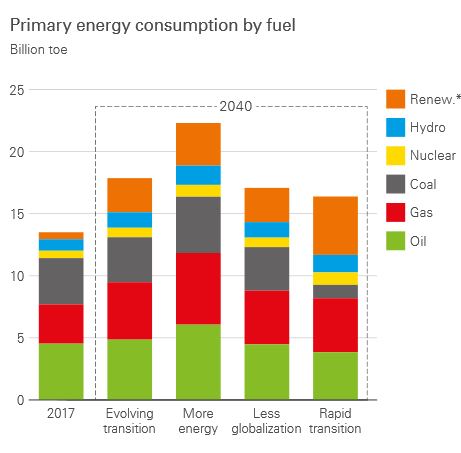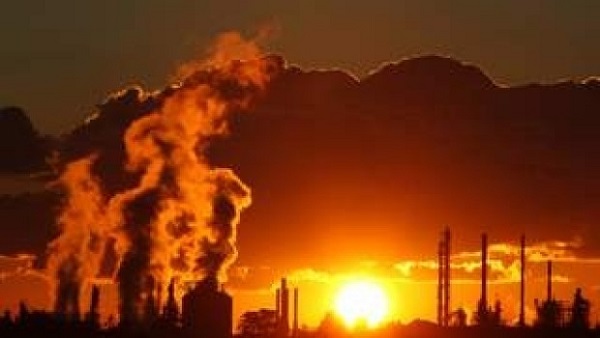1. Queensland electricity day-time prices to zero six days in a row
We’ve had unwelcome dry weather this ‘winter’ in Queensland but the good news is that electricity prices have dropped to zero six days in a row:
We’ve had unwelcome dry weather this ‘winter’ in Queensland but the good news is that electricity prices have dropped to zero six days in a row:
The headline is that oil giant BP sees global demand for coal continuing for decades in the face of dynamic growth of renewable energy.
That is what BP thinks will happen on the basis of projecting forward what we are doing to date. However, in what they see as a Rapid Transition Scenario, BP still sees around half of our energy needs in 2040 coming from fossil fuels in the form of gas and oil. Here from the BP Energy Outlook, 2019 in a nutshell is the story:
 Continue reading BP sees coal demand continuing, even more so oil and gas
Continue reading BP sees coal demand continuing, even more so oil and gas

On Monday the NSW opposition leader, Michael Daley, announced that if elected on 23 March, Labor would deliver seven gigawatts of extra renewable energy by 2030.
That is the case in all major economies except Japan, according to BNEF. From RenewEconomy:
“In India, best-in-class solar and wind plants are now half the cost of new coal plants,” the report says, and this is despite the recent imposition of import tariffs on solar cells and modules. Continue reading Climate clippings 228
That was the headline in the dead tree version of the AFR. Bill Ferris is the outgoing Science and Innovation Australia chair. He says he didn’t find the Coalition government’s rewriting of the ACCC report to support coal-fired power a helpful signal, but:
“That ain’t going to stop and it won’t stop because a government is concerned about the electoral impact. Continue reading Climate clippings 227
 On the weekend Energy Minister Josh Frydenberg gently reminded the Coalsheviks in the LNP Coalition that they should not be flirting with the idea of coal-fired power, because
On the weekend Energy Minister Josh Frydenberg gently reminded the Coalsheviks in the LNP Coalition that they should not be flirting with the idea of coal-fired power, because
He warns that they may be investing in what will become ‘stranded assets’ before they wear out.
Why doesn’t he tell them like it really is? Tell them to look out the window.
The heatwave in Europe this year has been assessed as ‘five times’ more likely because of climate change. The northern summer’s heat is being recognised as the strongest climate signal yet. Wildfires have raced through neighborhoods in the western United States, Greece and as far north as the Arctic Circle. Drought is threatening food supplies: Continue reading NEG policy disaster won’t fly

In the largest solar power purchasing deal ever by an industrial energy user in Australia BlueScope Steel will take the bulk of the electricity from the 133MW (AC) Finley Solar Farm to be built 100km west of Albury.
There’s more at RenewEconomy: Continue reading BlueScope signs up with 500,000-panel solar farm
On Wednesday morning Ben Potter’s article in the AFR Coalition fiddles as renewables remake grid told business leaders and politicians what is actually happening before their eyes.
Over at the Oz the headline was:
and
So, what is going on? We’ll look at the Nats first, then Abbott, and finally, the real world. Things are coming to a crunch point which will determine how Malcolm Turnbull’s stewardship is seen by future generations. Continue reading ‘Coalsheviks’ want to head renewable energy off at the pass
The Australia Institute has instituted a National Energy Emissions Audit , which Giles Parkinson wrote about at RenewEconomy.
The April-May update tells us:
Continue reading National emissions audit shows NSW in some trouble

Snowy Hydro 2.0 was, I thought, being justified at the political level by its capacity to back up with pumped storage some of the “reckless” development of wind and solar energy around the place. RenewEconomy now reports that Snowy Hydro is itself planning to develop 800 MW of wind and solar capacity. It has put out an expression of interest document, aiming to conclude contracts by September:
“Snowy Hydro’s goal is to construct a portfolio of wind and solar offtakes such that the resulting portfolio benefits from diversification of fuel sources (wind / sun), geography (across NEM States, latitude and longitude) and supply profile (intra-day, week, month and season).”
Joe Romm’s article was also posted at RenewEconomy.
About a month ago Meridian Australia’s CEO Ed McManus said that while the electricity market can turn on a dime, stability had returned to the market and the trend looks good. They had just concluded a swag of hydro, wind and solar power deals which will deliver cheaper electricity than the company could buy in the wholesale market. So their retail arm Powershop was offering a 5 per cent price cut to consumers.
Contracts for 2019 have since fallen to $82.90 in Victoria and $94.36 in SA, while contracts for delivery in Victoria in 2020 and 2021 are trading at $76/MWh and $69/MWh and contracts for 2020 and 2021 in SA are trading at $86/MWh and $85/MWh.